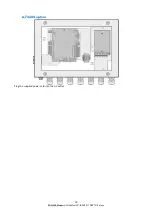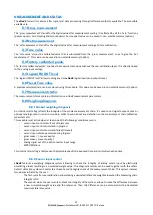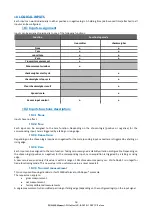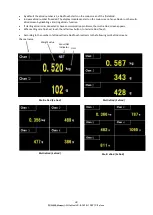
29
SCAIME Manual : NU-eNod4C-E-0418-196712-F.docx
6
CALIBRATION AND SCALE ADJUSTMENT
eNod4
is factory calibrated to deliver
500 000 counts for 2mV/V
with a load cell on the
A3
input connector.
Initial calibration can be modified for a better adjustment to the usage or because of characteristics of the sensor. To
achieve these various types of adjustments the following options and procedures are available:
•
physical calibration
•
theoretical calibration
•
scale adjustment coefficient
•
gravity correction
6.1
Physical calibration
Physical calibration is done by applying to the sensor
from 1 up to 3 known references
.
6.2
Theoretical calibration
The theoretical calibration allows defining
eNod4
user span
without
using calibration reference
. The information
needed to achieve the procedure is
the sensor sensitivity and its rated capacity
.
For example, a 15kg load cell with sensitivity equal to 1.870 mV/V at 15kg; put sensor maximum capacity 15 000 and
sensor sensitivity 1,870.
6.3
Scale adjustment coefficient
Initial calibration value can be modified with a scale adjustment coefficient. This coefficient has maximum and minimum
values.
6.4
Gravity correction
When
eNod4
is used to condition a weighing sensor, it can be necessary to adjust measurement if the place of
measurement is different from the place where
eNod4
was calibrated.
eNod4
automatically adapts its span by storing
into its non-
volatile memory these 2 parameters: ‘Calibration place g value’ and ‘Place of use g value’. Initial values for
these coefficients are identical; they correspond to the g value of a calibration place located in ANNEMASSE FRANCE.
6.5
Scale interval
The scale interval is the difference between 2 consecutives indications. Possible values are: 1, 2, 5, 10, 20, 50, and 100.
Modification of scale interval is taking into account after a new calibration.
When using eNod4 for legal for trade purpose, it is
imperatively required to activate the legal for trade switch
BEFORE any calibration procedure (cf § legal for trade switch
)
.
!
















































